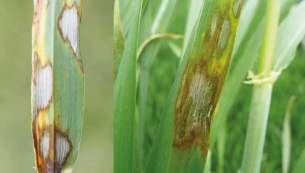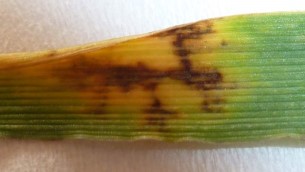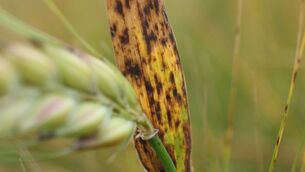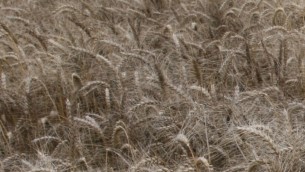Leaf Rust - Barley
Puccinia hordei
Leaf rust (also known as brown rust) is a disease of barley. Whilst occurring less frequently than leaf rust in wheat it can result in significant yield loss if not controlled. Leaf rust is favoured by
warmer, drier conditions with the initial source of inoculum being infected volunteer cereals. Under favourable conditions leaf rust can develop very quickly. Spores are scattered at random on the leaf and are often surrounded by a pale chlorotic halo.

Leaf rust may not be the most commonly encountered barley disease, never the less it is widespread and can be seen every season.
Look out for:
- Brown rust pustules scattered across the surface of the leaf.
Risk Factors:
- Warm conditions
Leaf rust is wind dispersed, placing all barley crops at risk.
Leaf rust favours warm conditions and therefore is more of a problem in early to mid-summer.
Severe infections can lead to significant yield losses.















